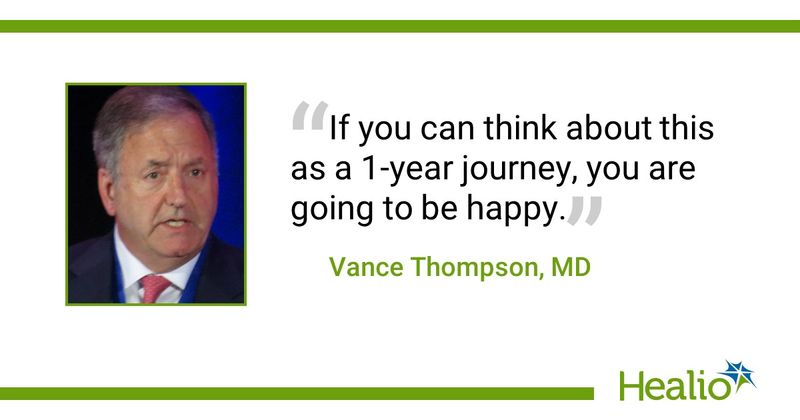Accounting for neuroadaptation important for treating dysphotopsias
Key takeaways:
- Every patient has a varying ability to neuroadapt to dysphotopsias.
- The path to better vision may take 1 year.
SAN DIEGO — Surgeons should optimize their treatment of dysphotopsias based on each patient’s natural ability for neuroadaptation, according to a speaker here.
According to Vance Thompson, MD, who gave the Steinert Lecture at Refractive Day at the American Society of Cataract and Refractive Surgery meeting, it is important to help patients overcome “the combination of glare, halo and starburst. We have to minimize what we can help with and reduce it to a halo so that they can now neuroadapt.”

According to Thompson, every patient has a varying ability for neuroadaptation to dysphotopsias, meaning there is a way for surgeons to optimize their treatment approach for each patient.
“So, how we optimize is we just work our way back in the eye and start knocking out every source of glare until we get to that source of glare,” he said.
To optimize treatment, it is important to understand the distinct relationship between P1 and P4 Purkinje light reflections when performing capsulotomy.
“If you know the relationship of P1 and P4 with fixation, you can just reestablish [fixation] manually,” he said. “Those two images in surgery are always there for you to use.”
Overall, Thompson said that it is important to reassure patients that the path to better vision outcomes will most likely be a “1-year journey,” with the first 6 months focusing on healing and optimizing image quality and the second 6 months being when the patient’s brain eliminates or minimizes lingering halo through neuroadaptation.
“If you can think about this as a 1-year journey, you are going to be happy,” Thompson said.

